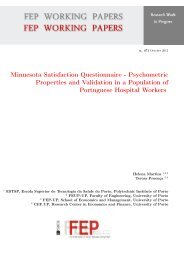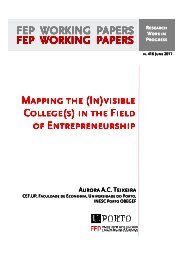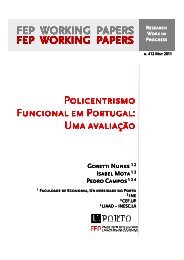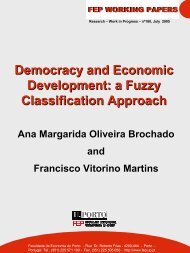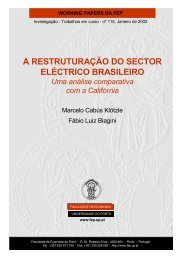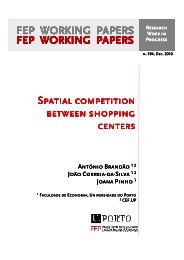Ant Colony Optimization: a literature survey - FEP - Working Papers
Ant Colony Optimization: a literature survey - FEP - Working Papers
Ant Colony Optimization: a literature survey - FEP - Working Papers
Create successful ePaper yourself
Turn your PDF publications into a flip-book with our unique Google optimized e-Paper software.
has to be paid for using that arc. The other one, T f (ij), is called the flow trail and is related tothe cost of the flow passing through the arc. Flow ants, which can detected and reinforce bothpheromone types, are created, as well as reliability ants, that can only detect and reinforce arcpheromone. In each iteration a single solution is produced by the flow ants, and then the solutionis made reliable by adding an extra arc by the reliability ants. Both flow trails and reliabilitytrails are updated, at the end of the corresponding construction phase, by initially performing areduction on the pheromone of all arcs. Then, each reliability ant adds:∆T e (ij) = 1b ij(27)to each arc on its solution, regarding the arc pheromone trail, where b ij is the fixed cost to beincurred by using arc (i, j). Each flow ant adds the following quantities to the arc and flowpheromone trails, respectively, on the arcs of its solution, provided that fixed-costs are onlypaid once∆T e (ij) = 1b ijand ∆T f (ij) = 1c ij d j, (28)where c ij is the cost per unit flow and d j is the demand of node j. The reason why reliabilityants to not deposit pheromone on flow trails is straightforward, the extra arc that they add to thesolution does not carry any flow.In a work by Alaya et al (2004), where multidimensional knapsack problems are solved, thepheromone update is done in such a way that the quantity deposited in each component of thesolution includes information about the difference between the objective function value of thebest solution of the iteration F (S it ) and of the global best solution F (S ∗ ),∆τ ij =11 + F (S ∗ ) − F (S it ) . (29)Therefore, the closer the solution is to the global best solution, the higher the quantity ofpheromone deposited.Two pheromone updating rules are proposed in (Shyu et al, 2004), a global and a local one.On the one hand, at the end of each iteration, and after evaporation is applied, the pheromonepresent on the nodes of the incumbent solution S ∗ are reinforced with a quantity inverselyproportional to the total weight of the nodes in the solution.∆τ i =1∑j∈S ∗ w j. (30)On the other hand, the local pheromone updating rule is applied each time the ant adds a nodeinto its solution and is given by16



